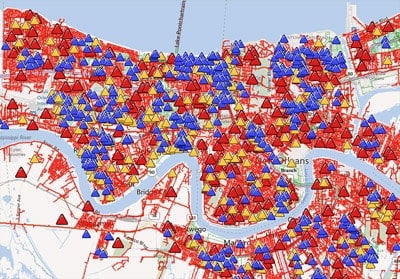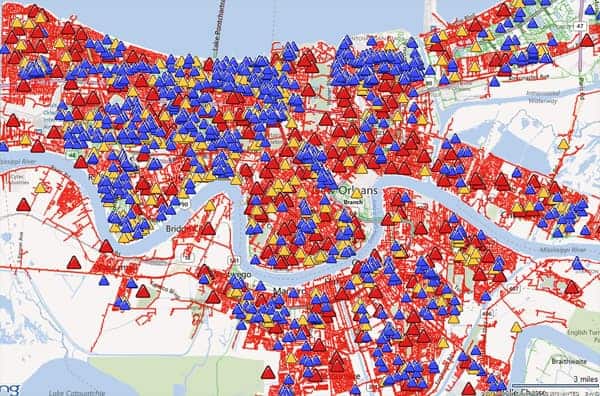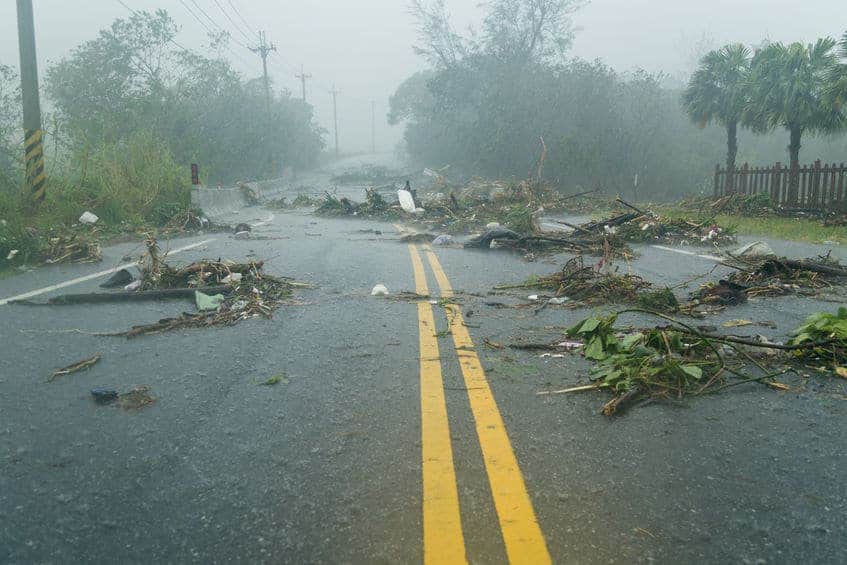
by Brian Brignac | Oct 31, 2012 | Archived, Disaster Studies
The devastation from Hurricane Sandy is widespread, even to areas of the country not in the storm zone. While the effects are widespread, we want to assure our customers that NONE of our production systems were affected by Hurricane Sandy’s wrath on the east coast.
Internally, we are having some challenges however. Some of our email systems are based in New York and we experienced delays in service yesterday. If you tried emailing us, we may not have received it and for that we apologize. Our email service has been restored and is functioning normally now.
Additionally, our phone system provider is also in New York and is having difficulty restoring our complete phone network. At this time, you may still reach us by dialing our MAIN LINE 214.363.1900. We anticipate the toll-free number and all the extensions to be in full service again in a day or so.
We appreciate your patience and again, want to emphasize that there was never so much as a blink of interruption on our production systems.

by Brian Brignac | Oct 24, 2012 | Archived, Cybersecurity
Embrace the Audit
The word “audit” strikes fear in the hearts of most business owners, but a pre-emptive data protection audit should actually be embraced. Taking stock of your data and the many scenarios which could impact its continuity is vital to the livelihood of a business after a disaster or other data loss event.
Twenty years ago, the data that companies were concerned about protecting was largely automated data: accounting data, inventory, payable, receivables, accounting ledger, etc. Today’s business has all of those components plus all communications, email, scheduling, project management, web enabled stuff, databases… there is so much more now that needs to be considered when planning for a data protection audit.
Preparing for a Data Protection Audit
The first step of every data protection audit is to perform a data protection needs analysis: evaluating the company’s essential needs, creating an overview of what data needs to be protected and what systems must be protected.
Once those areas have been identified, top-level management must determine how soon the company needs to recover the computer systems in the event of a disaster, and how current the data needs to be (its RTO and RPO), and then ultimately marry that with what the business can afford.
A critical component of the evaluation phase of any data protection audit includes user participation. While the IT department is a key member of the audit team, they should NOT be making the sole decision on what functions and requirements are required for each business unit’s data integrity. IT will focus on protecting a database, but may overlook the functionality that the database delivers. For example, the application that speaks to a company’s SQL database may reside on a single PC and if the RPO restores the database but not the PC, you’ve accomplished nothing!
Data Protection Audit – Questions to ask each business unit or department
- What are all the all the sources of data that need to be restored?
- What systems need to be restored? Keep in mind, while databases may be stored on the server, some programs that run the databases live on individual desktops.
- How quickly does the data need to be restored? (RTO) If you’re running ecommerce, you may need to have zero downtime so you don’t lose any transaction data. If your business is a service business, maybe a 20 minute or even a few hour delay would be inconvenient, but would not severely impact the flow of revenue.
- How fresh does the data need to be? (RPO) For some companies, a restore of data from midnight the previous night is sufficient, while others may require a 5 minute or less restore time.
Once the questions have been answered, then the budget and priorities can be formed. If the business unit says data RTO must be 30 minutes, then IT can say, “Great, in order to have an RTO of 30 minutes, this is the cost for it. Can we budget for a 30 minute RTO or are we happy with a 6 hour RTO based on the cost differential?”
Any successful data protection audit should be approached as a design project. Making a plan at a high level that everyone can agree on before actual execution is key.
Part Two – Data Protection Planning
Part Three – Business System Perspectives

by Brian Brignac | Sep 12, 2012 | Archived, Disaster Recovery
Now that Hurricane Isaac is in our rear-view mirror, it’s time to assess the disaster damage.
We monitored and shared the New Orleans power outages on Global Data Vault blog day-by-day, but we censored the wrath pointed at local energy provider Entergy to return the city’s electricity. As you can see from the time lapse video here,

the progress was slow (as tensions built) in the beginning, but by the 5th, major headway was made and tempers were calmed. Poor Entergy though, they just couldn’t get a break. Problems with an electrical substation knocked out power to about 11,000 customers in the Central Business District, Mid-City and Uptown a few days post recovery which no doubt added fuel to the fire.
The good news – if there is good news after a hurricane — is that Officials with the National Weather Service said that their modeling of hurricanes before and after the improvements in New Orleans show no evidence that they led to increased flooding in the River Parishes. The great news is that the levees held. That’s a key accomplishment for Mayor Mitch Landrieu and a credit to his leadership over the past several years. However, we cannot forget that Isaac was only a category 1 hurricane. Katrina (2005) was a 3 hurricane when it came ashore. Here is a list of storms that reached Category 5 in the past ten years:
| Storm |
Season |
Time as Cat 5 |
Peak wind speed |
| Isabel |
2003 |
42 hours |
165 mph |
| Ivan |
2004 |
60 hours |
165 mph |
| Emily |
2005 |
6 hours |
160 mph |
| Katrina |
2005 |
18 hours |
175 mph |
| Rita |
2005 |
24 hours |
180 mph |
| Wilma |
2005 |
18 hours |
185 mph |
| Dean |
2007 |
24 hours |
175 mph |
| Felix |
2007 |
24 hours |
175 mph |
The bad news is that Isaac was a hefty beast. His footprint was wide and like many who visit New Orleans for the first time, he just didn’t want to leave. Isaac became a slow-moving hurricane that pelted the city for far too long. Its lingering effects pushed more water into Lake Pontchartrain and Lake Maurepas and the swamps below them, which brought worse flooding to the areas than anyone expected.
It will be some time before the actual bill from Isaac is totaled. Between the extra expenses and lost revenue, the city is reeling from yet another blow to its tightly stretched budget. Overtime for emergency responders and lost hotel taxes are easy to calculate, lost wages from city agencies, retailers, and those who scrapped their Labor Day plans for the Southern Decadence Festival are much more difficult to estimate.
Many businesses were unable to operate for a full week without power, internet connectivity and access to their IT systems.
Hurricanes have the potential to decimate a city and the businesses within it completely, but with pre-planning and a solid disaster recovery system in place, it doesn’t have to. Global Data Vault assisted a large number of customers through this recent storm. These businesses were back in business quickly. We’re happy that our customers weren’t significant victims of Hurricane Isaac.

by Brian Brignac | Aug 30, 2012 | Archived, Disaster Studies
The current, as of 10a.m. on Thursday August 30, status of power outages in New Orleans is shown below. Entergy, the local utility, has 10,000 workers deployed to restore power.
Legend: Blue = 1 to 50, Yellow = 51 to 250 and Red = 251 to 1,000 power outages. Red lines are failed power lines.


by Brian Brignac | Aug 29, 2012 | Archived, Cybersecurity, Disaster Recovery
As Hurricane Isaac continues its slow march inland, the city of New Orleans is largely without power this afternoon. This image shows the widespread power outages in the city. It’s seems eerie that today is the seventh anniversary, if you should call it that, of Hurricane Katrina.

Global Data Vault remains busy supporting customers and bringing up failover environments in our Dallas data center facility. We remain available to assist current and new customers in the affected areas and elsewhere.
Key: Blue = 1 to 50, Yellow = 51 to 250 and Red = 251 to 1,000 power outages.
While power is down all across New Orleans, the good news is that – so far flooding – remains largely controlled. Flooding was the cause of great devastation and loss of life that resulted from Katrina. Let’s hope that this situation remains as it is now – certainly serous, but not a repeat of Katrina.







